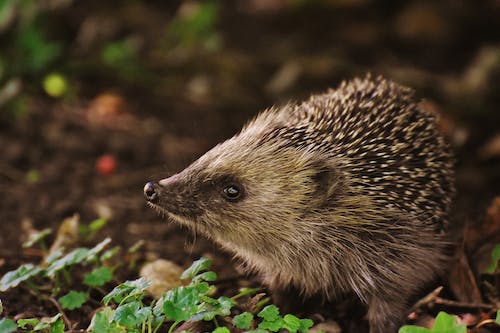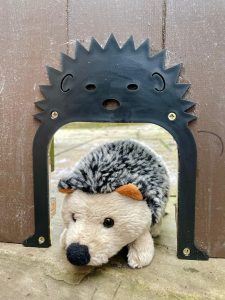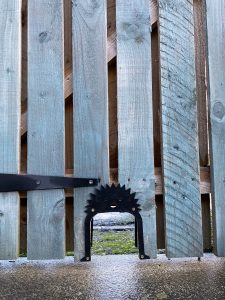Looking Out For Forest Friends
Rounded body, short dark yellow-tipped spines and a short tail – is it a Gruffalo I hear you ask? No, it’s the Hedgehog!
Hedgehogs are a picture of cuteness and are largely widespread throughout Britain. In the summer time they spend most of their days sheltering in moss, grass, leaves and hedges. In fact, the reason they are called ‘Hedge’ hogs is because of where they build and nestle in hedges, bushes and shrubs. The ‘hog’ part comes from the small snorting and grunting sounds they make, which is similar to a pig.
There are a few facts about Hedgehogs, for example;
- They are nocturnal
- They can hibernate
- There are 15 species of hedgehog
- They have 5000 spikes
- Their snout is long to help them forage for food, such as worms, insects and berries
- They are lactose intolerant
 Hedgehogs tend to forage in the evening and can travel for up to 2 miles, that’s a long way for little legs! They are known for being a Gardeners’ Friend and have earned this reputation because of their eating habits. Not only do they enjoy berries and fruit but the staple of their diet is made up from pests that are common in our back gardens such as beetles and caterpillars. This helps preserve the
Hedgehogs tend to forage in the evening and can travel for up to 2 miles, that’s a long way for little legs! They are known for being a Gardeners’ Friend and have earned this reputation because of their eating habits. Not only do they enjoy berries and fruit but the staple of their diet is made up from pests that are common in our back gardens such as beetles and caterpillars. This helps preserve the
fruit and vegetables you may have growing in your gardens.
Vulnerable to Extinction
Sadly, Hedgehogs are at risk, so much so that they are classified as ‘vulnerable to extinction’ and are on Britain’s red list for mammals due to the sharp rate of it’s decline. Hedgehogs are one of the oldest mammals on the planet. They are Britain’s only spined mammal and a national favourite. But their numbers have fallen from over 30 million in the 1950s to less than one million today. More and more is being done to stop these spiky little creatures from becoming extinct. Recently The British Hedgehog Preservation Society ran a successful campaign to ensure that all new housing developments include hedgehog highways. This will help to give hogs the room they need to roam and find food and suitable mates. https://www.countryliving.com/uk/wildlife/countryside/a28604641/hedgehogs-building-rules
A garden can be a haven for Hedgehogs but decking, astroturf, gravel and paving, as well as neat cut back grass with no trees or bushes aren’t much use to our prickly friends. Such things as pesticides not only kill the bugs that they eat but also get into the Hedgehogs diet, causing them to become ill. Therefore, the introduction of Wildlife gardening is helping to maintain these habitable havens and is aimed at creating an environment that is attractive to various forms of wildlife such as Hedgehogs. The move towards this form of gardening and the great work done by the Hedgehog Street campaign has shown that even though there is still a decline in the countryside, in urban and suburban areas things are looking better. Thankfully this means that more and more gardens up and down the country are becoming hedgehog friendly. Is your garden Hedgehog friendly? There is one way you can help…
Get your own hedgehog highway!


Let’s open up our gardens again, to get your own Hedgehog Highway contact Handyman Ian local to the area. He will cut a hole in your fencing and attach a hedgehog frame just like this one for £12
Email: https://www.facebook.com/handyian84 Whatsapp:+44 7740 328619
Get involved in making your garden hedgehog friendly and perhaps we can work together to save this species from extinction.
– Ashleigh